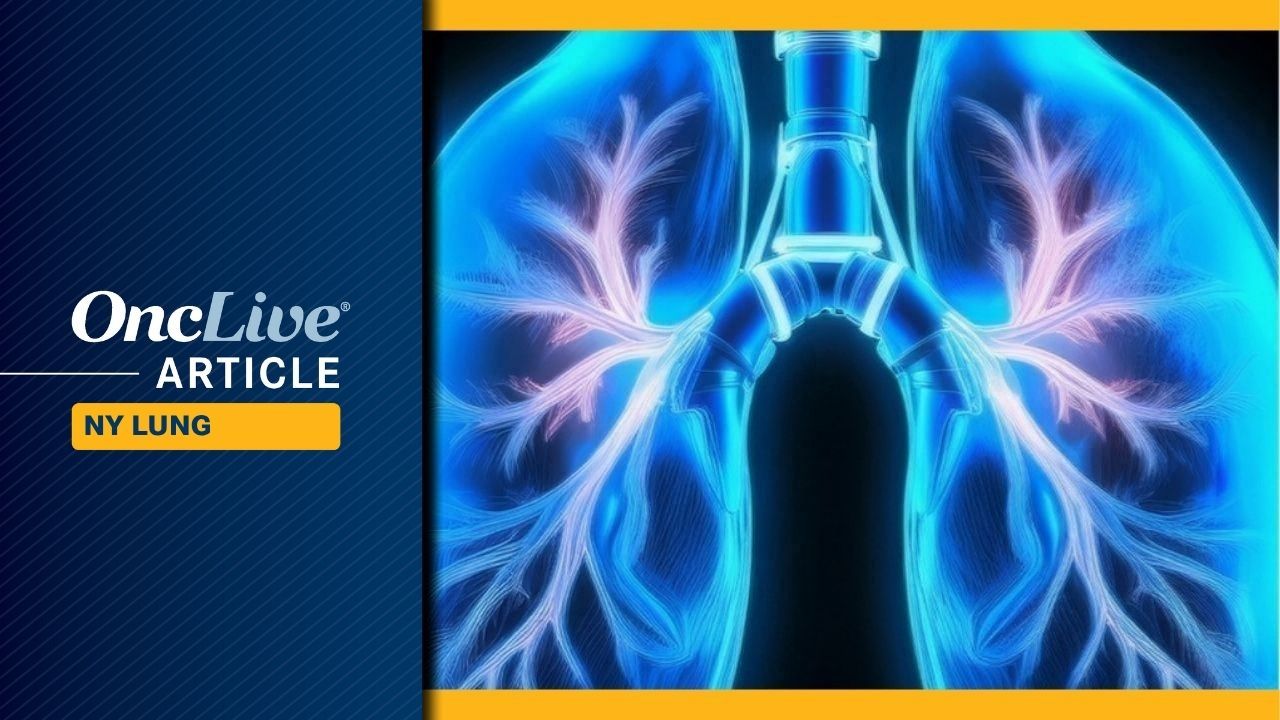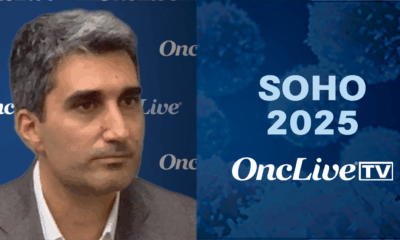Science
New Protein-Based Biomarkers Transform NSCLC Management Strategies

The management of non-small cell lung cancer (NSCLC) is evolving significantly, as recent presentations reveal a shift toward the incorporation of protein-based biomarkers and computational techniques. During the 20th Annual New York Lung Cancers Symposium on November 15, 2025, Dr. Soo-Ryum (Stewart) Yang, an assistant attending pathologist at Memorial Sloan Kettering Cancer Center, highlighted four critical trends shaping this landscape. These include the emergence of protein-based immunohistochemistry (IHC) biomarkers for antibody-drug conjugates (ADCs), the actionable potential of tumor suppressor genes, the application of synthetic lethality in treatment, and advancements in computational pathology.
A key challenge remains the scarcity of tissue samples, underscoring the necessity for multiplex IHC techniques and broad panel next-generation sequencing (NGS). This integration aims to deliver effective, personalized therapies to a wider range of NSCLC patients. Traditionally focused on genetic mutations, the new approach emphasizes the measurement of protein expression levels—an advancement that could unlock novel treatment avenues.
Emerging Biomarkers and Their Implications
Dr. Yang emphasized the importance of two critical protein biomarkers in NSCLC: HER2 and c-MET. While PD-L1 IHC testing has long guided checkpoint inhibitor therapies, IHC testing is now proving vital for ADCs. HER2 overexpression, present in up to 20% of NSCLC patients, is notable for its lack of correlation to mutation status. Dr. Yang pointed out that although most cases with high-level gene amplification exhibit IHC 3+ staining, not all 3+ cases are driven by amplification, complicating treatment decisions.
The FDA’s recent approval of fam-trastuzumab deruxtecan-nxki (T-DXd; Enhertu) for HER2-positive solid tumors, including NSCLC, was supported by findings from the phase 2 DESTINY-Lung01 study, which applied gastric cancer HER2 scoring guidelines to NSCLC testing. Similarly, c-MET overexpression, which can be found in up to 17% of EGFR wild-type cases, presents an actionable status when defined by over 50% of tumor cells exhibiting 3+ staining. The FDA also granted accelerated approval to telisotuzumab vedotin-tllv (teliso-V; Emrelis) for this patient group, based on data from the phase 2 LUMINOSITY trial.
Integrating HER2 and c-MET IHC screening into current diagnostic workflows poses challenges. Dr. Yang proposed a flexible strategy that accommodates diverse practice settings, allowing institutions to develop optimized workflows utilizing multidisciplinary insights and available resources.
Innovative Strategies in Targeted Therapy
The landscape of targeted therapy is also expanding, particularly regarding KRAS mutations. Occurring in up to 40% of lung adenocarcinomas, mutations in codons G12, G13, and Q61 are common. The most prevalent, the KRAS G12C mutation, has led to the establishment of targeted therapies such as sotorasib (Lumakras) and adagrasib (Krazati). Dr. Yang also noted ongoing clinical trials exploring the efficacy of multi-RAS inhibitors and RAS(ON) inhibitors.
In particular, the KRAS G12D mutation, often associated with poorer responses to chemoimmunotherapy, presents unique challenges. Promising results from a phase 1 study of zoldonrasib (RMC-9805), a KRAS G12D inhibitor, indicated an overall response rate of 61% and a disease control rate of 89%. Other multi-RAS inhibitors like daraxonrasib (RMC-6236) are showing potential in treating KRAS G12V-mutant NSCLC.
Dr. Yang also discussed the implications of mutations in tumor suppressor genes STK11 and KEAP1, which are implicated in up to 20% of lung cancers. These mutations often coexist with KRAS mutations and create an immunosuppressive tumor microenvironment, leading to primary resistance to immunotherapy. The findings from the phase 3 POSEIDON trial suggest that combining a CTLA-4 inhibitor with a PD-L1 inhibitor and chemotherapy might improve outcomes for these patients.
The therapeutic target landscape includes MTAP deletions, which occur in up to 18% of lung cancers, often correlating with poor outcomes. Dr. Yang explained that these deletions can create vulnerabilities that may be exploited through synthetic lethality approaches. Current detection methods for MTAP include NGS and IHC, with NGS requiring careful consideration of tumor purity.
The field is also witnessing the rise of TROP2 as a target for ADC development, illustrated by the ongoing exploration of datopotamab deruxtecan-dlnk (Dato-DXd; Datroway) as a second-line treatment. Although the phase 3 TROPION-Lung01 study indicated a progression-free survival benefit over docetaxel, it did not yield a statistically significant overall survival advantage.
Dr. Yang noted the potential of AI-driven methodologies in improving predictive power for biomarkers like TROP2. By employing computational pathology techniques, researchers can generate quantitative scores that may enhance treatment response predictions. However, he cautioned that current dependencies on proprietary digital pathology systems could limit broader accessibility and implementation.
As the fight against lung cancer continues, the integration of protein analysis, AI insights, and innovative therapeutic strategies is reshaping the landscape. Dr. Yang concluded, “We’re at a point where we should be starting to explore the feasibility of multiplex IHC similar to what we did with molecular markers and NGS.” This ambitious vision underscores the promise of comprehensive biomarker testing in NSCLC and the potential for personalized medicine to reach a larger segment of the patient population.
-

 Technology5 months ago
Technology5 months agoDiscover the Top 10 Calorie Counting Apps of 2025
-

 Health3 months ago
Health3 months agoBella Hadid Shares Health Update After Treatment for Lyme Disease
-

 Health3 months ago
Health3 months agoErin Bates Shares Recovery Update Following Sepsis Complications
-

 Technology4 months ago
Technology4 months agoDiscover How to Reverse Image Search Using ChatGPT Effortlessly
-

 Technology1 month ago
Technology1 month agoDiscover 2025’s Top GPUs for Exceptional 4K Gaming Performance
-

 Technology3 months ago
Technology3 months agoElectric Moto Influencer Surronster Arrested in Tijuana
-

 Technology5 months ago
Technology5 months agoMeta Initiates $60B AI Data Center Expansion, Starting in Ohio
-

 Technology5 months ago
Technology5 months agoRecovering a Suspended TikTok Account: A Step-by-Step Guide
-

 Health4 months ago
Health4 months agoTested: Rab Firewall Mountain Jacket Survives Harsh Conditions
-

 Lifestyle5 months ago
Lifestyle5 months agoBelton Family Reunites After Daughter Survives Hill Country Floods
-

 Health3 months ago
Health3 months agoAnalysts Project Stronger Growth for Apple’s iPhone 17 Lineup
-

 Technology4 months ago
Technology4 months agoHarmonic Launches AI Chatbot App to Transform Mathematical Reasoning













